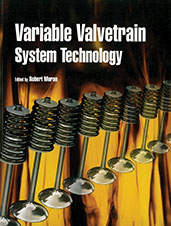Journal Article
Steady-State Combustion Development of a Downsized Multi-Cylinder Engine with Range Extended HCCI/SACI Capability
2013-04-08
2013-01-1655
This paper focuses on the combustion development portion of the Advanced Combustion Controls Enabling Systems and Solutions (ACCESS) project, a joint research project partially funded by a Department of Energy grant. The main goal of the project is to improve fuel economy in a gasoline fueled light-duty vehicle by 30% while maintaining similar performance and meeting SULEV emission standards for the Federal Test Procedure (FTP) cycle. In this study, several combustion modes Spark Ignited (SI), Homogeneous Charge Compression Ignition (HCCI), Spark- Assisted Compression Ignition (SACI)) were compared under various conditions (naturally aspirated, boosted, lean, and stoichiometric) to compare the methods of controlled auto-ignition on a downsized, boosted multi-cylinder engine with an advanced valvetrain system capable of operating under wide negative valve overlap (NVO) conditions.

